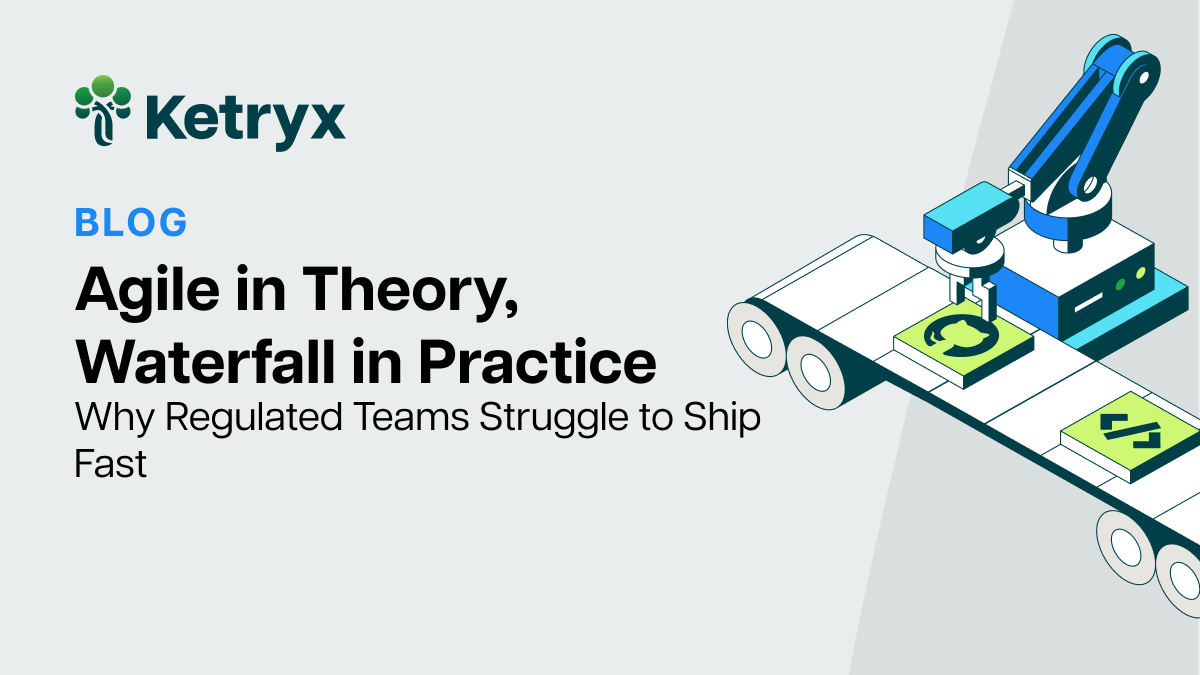
Table of Contents
We built Ketryx to accelerate validated software development projects, decrease time to market, and ensure proactive post-market surveillance at scale. In order to do this, it’s vital that Ketryx performs at the speed and complexity of your projects, with the flexibility to support many different ways of working.
Ketryx 2.7 does just that. This release focused on the robustness and performance of the Ketryx platform, and the improvements we made mean that Ketryx can support expanding levels of complexity with the high standards of quality that our customers expect of us and themselves. As a result, this release was focused on performance improvement and reliability at scale. We are also releasing new features alongside these necessary improvements that make Ketryx more configurable and connected. This validated release comes 37 days after our last validated release of Ketryx.
Item generalization in Jira creates expanded flexibility
Ketryx users can now create any type of configuration item they want in Jira. You can use any of the existing configuration items (requirements, software item specifications, risks, test cases, etc.) or you can create your own in order to align with your existing processes. This increased freedom creates greater configurability in Ketryx and lets users fully customize their Jira instance to match their preferred ways of working.
Create manual vulnerabilities for increased cybersecurity
This release introduces the ability to manually create a vulnerability in Ketryx. Previously, Ketryx fetched vulnerability information through scanning or through an imported SPDX. Now, Ketryx users can manually create a product vulnerability that is not tied to any library they use. This feature increases the flexibility of Ketryx to manage vulnerabilities from multiple sources.


Expanded vulnerability detection
This update enables vulnerability detection for ecosystems based on dependency entries provided via SPDX or dependency files. By leveraging both our own database records and dependency information from builds, Ketryx can better identify vulnerabilities across various ecosystems.
Consistent glob pattern matching between Git-based items and dependencies
This release introduces significant improvements to Git-based items and the way we scan repositories to provide that powerful functionality scanning. Glob patterns for identifying items within Git repositories and dependencies are now consistent, meaning that Ketryx users can specify glob patterns to selectively scan folders or target specific file types within a repository. This change gives users more granular control over which files and subdirectories they include during analysis. By unifying and enhancing Git repository scanning behavior, Ketryx improves code maintainability, offering a more streamlined and customizable scanning process for software developers.
Ketryx clients can now include or exclude specific files within a repository from dependency scanning using glob patterns by checking the “Restrict dependency file locations” box in the project settings. The same pattern syntax works consistently for dependency files as well as Git-based items.
To learn more about Git-based items, watch this webinar: Git for IEC 62304.

Automated tests can reference multiple items
Automated tests can now reference more than one configuration item. This means that you can associate multiple independent requirements or specifications with the same automated test. All you need to do is reference these items in your automated tests and execute the tests as usual.
We are excited to continue adding features and functionality to Ketryx that allow developers to work in their preferred DevTools while maintaining compliance and traceability. This release’s theme of performance demonstrates our commitment to supporting medical device software teams as they seek to release faster.

Erez is passionate about improving patient care and health outcomes with software solutions. Over the last decade, Erez worked in industries including computational mathematics, biotech, and energy, helping build monitoring systems for pharmaceutical equipment and AI for medication management. Before Ketryx, Erez worked with Amgen, the world’s largest biotechnology company, as the head of AI/ML for their medical device division and with Wolfram Research, the builders of Mathematica and Wolfram|Alpha. Erez holds a Master of Science in Electrical Engineering and Computer Science and a Master of Business Administration from the Massachusetts Institute of Technology.



.svg)